Discovering Comalapa: History, Art and Living Culture
- Juan Francisco Rodas
- Aug 19
- 4 min read
Updated: Aug 21
Comalapa, known as the "Florence of America" for its artistic and cultural wealth, offers each visitor a tour that blends geography, history, traditions and contemporary art..
✨ Visiting Comalapa is like embarking on a journey through Guatemala's history, art, and traditions. Its murals, churches, workshops, and landscapes invite you to value collective memory and keep the cultural legacy alive for future generations.
Geography and Climate
Located in the department of Chimaltenango, San Juan Comalapa is 80 km from Guatemala City (approximately an hour and a half drive). It is nestled in a valley surrounded by mountains and pine and oak forests. Its climate is temperate mountainous, with temperatures ranging from 12°C to 24°C, making it pleasant to visit year-round.
History
The territory of Comalapa has Kaqchiquel Mayan roots. During the pre-Columbian era, it was an important agricultural and cultural center. After the Spanish conquest, the area was reorganized under the colonial system, with the construction of churches and plazas. In the 20th century, Comalapa gained renown as a breeding ground for visual artists, especially for the work of Oscar Peren and his school of painting. Today, it is a town that preserves its Mayan identity, its traditions, and a profound artistic sense that has propelled it nationally and internationally.
Population
The current population is predominantly Kaqchiquel Maya, although mestizo and ladino families also coexist. The predominant language is Kaqchiquel, along with Spanish, especially in commerce and education. This cultural mix is reflected in the music, traditional dress, and religious festivals.
Biodiversity and Agriculture
The area boasts a rich biodiversity: birds, butterflies, oaks, pines, and native plants that coexist with the agricultural spaces. The main crops are:
Corn and beans, the basis of the local diet.
Vegetables such as cabbage, carrots, peas, and onions.
Ornamental flowers are produced for the local and national markets.
Fruit trees such as peaches, avocados, and plums.
Cultural Heritage
Comalapa is distinguished by its valuable cultural and artistic heritage, reflected in its colonial churches, historic murals, living traditions, and the many painters who have given it national and international fame.
Tourist House
This space offers visitors information about the town's history, activities, and attractions. It is the ideal starting point for a tour of Comalapa's art and culture.
The Mural Painted by Artists and Residents
The mural of San Juan Comalapa, located on the exterior walls of the General Cemetery, is a monumental work measuring 184 meters long and 2.3 meters high. It was completed between 2002 and 2003 by at least 60 local painters, with the support of hundreds of students, teachers, and residents. This collective work depicts 59 scenes that narrate the history of the town, from pre-Columbian times to the present day, including the period of the conquest, the armed conflict, and the subsequent cultural recovery. The mural is considered the longest in Guatemala and a symbol of the artistic and cultural heritage of the Kaqchikel community.
In addition to its impressive size, the mural stands out for its primitivist pictorial style, characteristic of the popular painting of San Juan Comalapa, which uses vibrant colors and a visual narrative accessible to all audiences. It is one of the municipality's main tourist attractions and a living testament to the cultural identity of its inhabitants. The mural is mainly segmented into 3 historical periods:
Pre-Columbian Mural
An impressive mural that narrates the Mayan origins and worldview, showcasing the spiritual and cultural richness of the indigenous peoples before the arrival of the Spanish.
Pre-Columbian Mural
An impressive mural that narrates the Mayan origins and worldview, showcasing the spiritual and cultural richness of the indigenous peoples before the arrival of the Spanish.
Armed Conflict Mural
This mural sensitively depicts the consequences of the internal armed conflict on the local population, paying tribute to historical memory.
.
Archaeology
In its surroundings, there are archaeological remains that bear witness to the ancestral Mayan presence in the region, highlighting Comalapa's historical importance within the central highlands.
Oscar Peren Exhibition
Master Oscar Peren, one of Guatemala's most renowned painters, is hosting an exhibition of his work, capturing the daily life, festivals, and spirituality of Comalapa in a unique and colorful style.
Roberto Peren Painting Workshop
This workshop promotes the training of new generations of artists, following the pictorial tradition of the Peren family, which has left an indelible legacy on the cultural identity of Comalapa.
Calvary Church
A church that holds great spiritual value for the residents. Its architecture and religious tradition make it a place of devotion and community gathering. It dates back to the 18th century and was built by the Franciscans.
Colonial Church
Comalapa's main church preserves its colonial style and represents one of the municipality's most important architectural heritage sites. Its reconstruction was due to the earthquake that devastated the country in 1976.
Central Park
The heart of the town's social, cultural, and political life. Fairs, parades, and community gatherings are held here, strengthening the identity of Comalapans. This park is a haven for the daily life of the municipality.
Pilas or Water Ponds
There are more than 300 pilas (water basins) in the urban area, and they are traditional structures where families wash clothes and share communal moments. More than just utilitarian places, they are symbols of social coexistence.
Casa Textiles
A space that preserves and promotes textile art, where you can appreciate and purchase fabrics made on a backstrap loom, full of color and Mayan symbols that convey cultural heritage. It was founded by the textile artist Angelik Serech


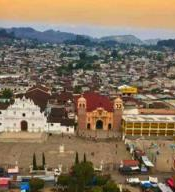





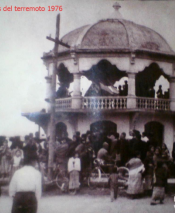




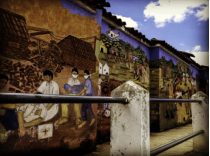
















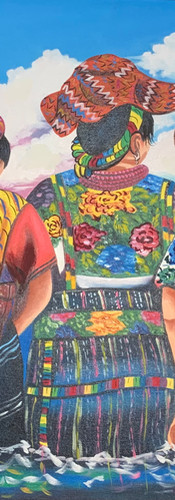



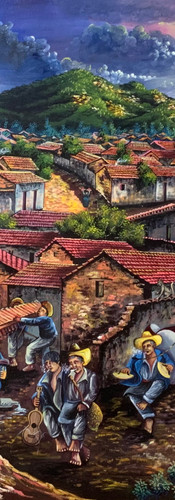



















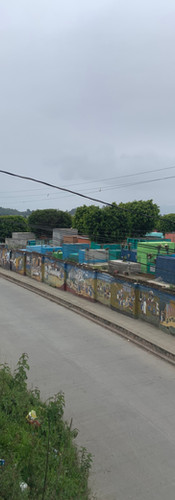



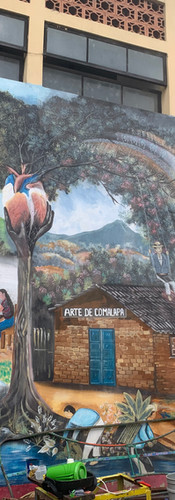









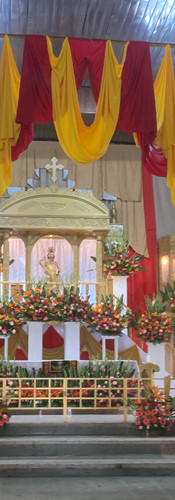









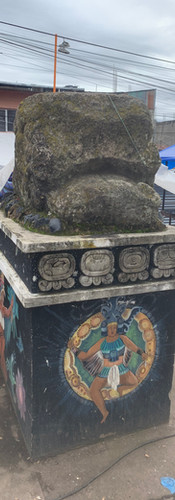











Comments